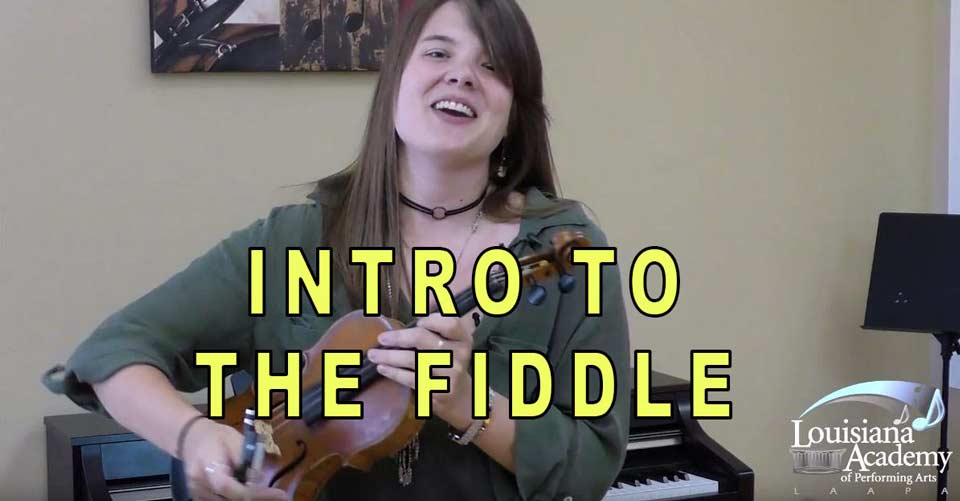Intro to Fiddle Lessons
Ms. Bridget, Instructor of Violin at LAAPA will teach you a variety of beginning fiddle techniques such as slides, double stops and more!
Learn how to Play the Fiddle
- contributed by Bridget C.
(00:13): Hi. My name is Bridget Corrigan and I am a violin instructor here at Louisiana Academy of Performing Arts. Today's Lagniappe lesson is going to be how to get started as a fiddle player. Why don't you grab your violin and we can get started with a basic riff. This song is called Boil 'Em Cabbage Down. We're going to start on high second finger on A string, C sharp. One, two, three, four.
(00:40): Third finger, second finger, first finger, second finger, third finger, second finger, first, open A.
(01:02): Why don't we try playing that a couple of times, get comfortable with that. Starting on a second finger again, one, two, three, four.
(01:26): One more time.
(01:26): All right, now why don't we add some slides to this? For slides, you're going to want to start below the note they want to ultimately end on. If we're going to do a high second finger, we're going to want to start on low second finger, so C natural. Starting with that finger position, slide it up. Then eventually you want to speed that up.
(02:06): Good. Now let's try adding that to what we already know. Ready?
(02:32): All right. Now, why don't we add some double stops? Double stops is when you're playing two notes at the same time, two strings. Place your bow on the A string and just lift your elbow up with your wrist up just a little bit to hit the D string at the same time. Then we can start adding some notes to that. Why don't we place third finger down on the A string, playing a D there, and add an open D below it. You can also do this while playing notes on the D string, so why don't we try playing first finger on D string, so the note E, adding an open A above it. Practice that, and you can practice different notes too.
(03:19): Then now we can play some notes on the A string. Practice that until you feel comfortable with that, too. Now we can try adding that in with what we know already. Starting on just second finger.
(03:52): Okay, now we can also add some accents, just going to make things sound really good. Accents with the bow, you just want to add a little bit of fire to the stroke that you're using. Rather than just playing ... I'd like to play something, this song is called Catharsis. I'm going to play it one time through without doing accents and then one time with accents and see if you can hear the difference there. This is without accents.
(04:28): With accents.
(04:39): It sounds a little bit cooler when we add that to it. Now, why don't we combine everything together? We're going to do slides, we're going to do double stops, and we're going to do accents. All right? On the count of four. One, two, three, four.
(05:06): Now you can play fiddle. Thank you for joining us today. See you next time.
